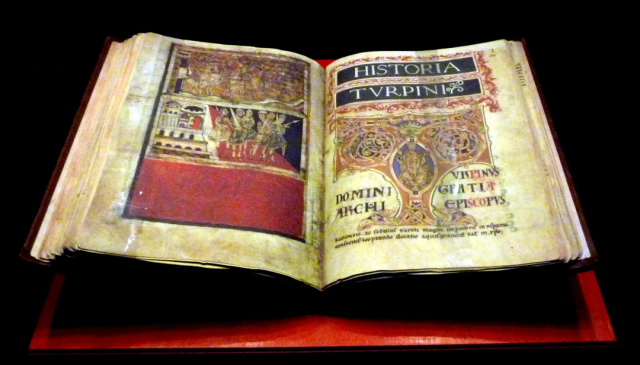Who was the first woman to complete the Camino de Santiago?
Since the pilgrimage to Compostela began, women have made the Camino. But who was the first one to achieve it?
The first centuries of pilgrimage to Santiago de Compostela are dark. Although there are written testimonies of the existence of the Camino de Santiago, there are no records of the people who did it. The proper names of pilgrims to Compostela can hardly be elucidated with certainty, although it is believed that some characters made this Way.
The first written references to the pilgrims
It is difficult to definitively establish the identity of the first woman pilgrim, the same as the first male pilgrim. When the tomb of the apostle Santiago was discovered, people began to visit it spontaneously out of curiosity and devotion, and many of those people would be women. However, those who came from nearby towns are not strictly considered pilgrims. The original conception of the pilgrimage is associated with the idea of sacrifice, and short journeys do not fit with that meaning.
Although the first visitors to the tomb are not pilgrims per se, it is not known who may have come from further afield, which would already be considered a pilgrimage. If we are not too strict and do not mark a minimum number of kilometers to determine the pilgrimage, it can be established with considerable certainty who the first pilgrimage was. There are no written references, but it would surely be an anonymous Galician woman who lived in the surroundings of Mount Libredón and decided to venerate the recently discovered tomb of the apostle.
The first documented reference to a female pilgrim is the same as that of the first male pilgrim. King Alfonso III of Asturias traveled to Santiago with his wife Jimena Garcés in the year 899. She is the first woman of whom there is written evidence, but there are historians who are reluctant to consider her a pilgrim because she made the journey on a donkey.
Other pilgrim women who made history
Countess Richardis of Sponheim
The first foreign woman to make the pilgrimage to Compostela (of which there is evidence) is Countess Richardis de Sponheim. From a German noble house, she began the Camino de Santiago in 1065 when her husband died while they were on pilgrimage to Jerusalem together. She was a mysterious woman, who arrived in Santiago covered in veils, and died shortly before reaching her home on her way back from Santiago.
Saint Matilda
This woman was a German empress, who made a pilgrimage to Santiago in 1125 to pray for the continuation of the alliance between England and Germany after the death of her husband. Some say that on his trip he obtained a relic of the Apostle James, a hand, which he later donated to Reading Abbey, a famous point of devotion to James in England.
Gildebert of Flanders
The Codex Calixtinus is a fundamental guide on the Camino de Santiago, and is generally attributed to Aymeric Picaud. But in reality there is evidence of a woman who accompanied him when this monk did the Camino de Santiago. Gildeberta de Flanders is mentioned in the codex itself as a partner, and it is not unreasonable to think that she could have been a co-author on her pilgrimage around 1140.
Elizabeth II of Portugal
The wife of King Don Dinis of Portugal is given the nickname of Raíña Santa (holy queen) for her totally selfless activity towards the sick, elderly, beggars and any disadvantaged person in her kingdom. In 1325 she made a pilgrimage to Compostela, and was so shocked by the sacrifice that the journey entailed that she allocated part of her heritage to inaugurate hospitals and care centers along the Way. In addition, he left his experience in writing, something totally unusual, but which helps to know the perspective of the Way during the fourteenth century.
Saint Bridget of Sweden
This woman belonged to the Swedish aristocracy, and she was very devout. This relationship with religion led her to make a pilgrimage to Santiago de Compostela in the mid-14th century with her husband, who died on the Camino. She also made a pilgrimage alone to Rome and Jerusalem, and founded her own religious order: the Brigidines. She was named a saint in 1391, and is the patron saint of Sweden.
Pilgrim women today
All these women marked milestones in the history of the Way, and it must be taken into account that their merit transcends a time when the activity of women was invisible. The female presence on the Camino de Santiago since then has only grown, until today. And it is that 52% of the compostelas issued in the first half of 2022 were for women. Since 2018 there are more women than men doing the Camino de Santiago. When given the same opportunities and visibility, women can go as far as any man.
Routes
Blog
 ¿Vas a hacer el camino de Santiago? Cuida tus pies antes y después
¿Vas a hacer el camino de Santiago? Cuida tus pies antes y después
 5 razones por las que contratar un seguro de viajes
5 razones por las que contratar un seguro de viajes
 Formas de hacer un logotipo
Formas de hacer un logotipo
 La importancia del registro de llamadas durante tu viaje por el Camino de Santiago
La importancia del registro de llamadas durante tu viaje por el Camino de Santiago
Information
Points of interest
Cities & Towns | Hostels | Lodgings | Restaurants | Saddlery | Doctors | Points of interest | Bikes workshop
Contact us | Privacy policy | Cookies policy | | Terms of use | Authorship | Web Map | Consentimiento
© Copyright LA VOZ DE GALICIA S.A. Polígono de Sabón, Arteixo, A CORUÑA (ESPAÑA) Inscrita en el Registro Mercantil de A Coruña en el Tomo 2438 del Archivo, Sección General, a los folios 91 y siguientes, hoja C-2141. CIF: A-15000649

